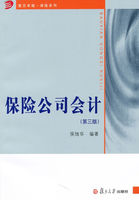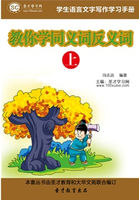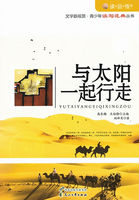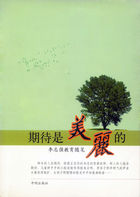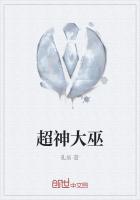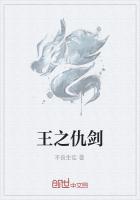01 Physical Changes 物理变化
Matter can be found as a solid, liquid, or gas. A solid has a fixed size and shape. The solid may be big like a brick. A solid may be powdery like sand or sugar. A solid may change its shape but stay a solid. A block of ice may be smashed into smaller pieces. The smaller pieces are still solid. Each solid piece has a fixed size and shape. If the ice is heated and melts into water, the shape changes. When the solid melts, a liquid forms. A liquid has a fixed size, but no fixed shape. Solids changing to liquids, change shape, but the size are fixed. Liquids take the shape of the container.
Some matter is not a solid or a liquid. It is a gas. A gas does not have a fixed size or shape. Gases are sometimes hard to see. Many gases are invisible.
What kind of matter is perfume? Is it solid, liquid, or gas? When you smell things you smell gases. Think about the food your mother cooks. You can smell the dinner. Can you see the “smells”?
Air is a gas. Some gases have no odor. These gases are hard to find. Gases with no odor or color are invisible.
When liquids disappear they become gases. When a water puddle dries up, the water has turned into a gas. You smell the perfume because the liquid has become a gas. Gases come from liquids. When you cool a gas, it becomes a liquid again.
As ice melts, a physical change takes place. A liquid changing to a solid is another physical change. A puddle of water drying up is a physical change. Liquids’ changing to gases is a physical change. A physical change may change the shape or size of something. That something is still the same thing after the change. The ice cube that melts is still water. The water that dries up is still water. Liquid water that freezes is still water. A physical change never changes something into something new.
There are other kinds of physical changes. Suppose you break a brick. Is this a physical change? Yes. The broken brick is still a brick. The broken brick did not change into something else. Suppose you smash a sugar cube. Is this a physical change? Yes. The smashed cube is still sugar.
Vocabulary 词汇
solid ["s?lid] adj. 固体的、实心的、结实的、可靠的、纯粹的;
n. 固体
liquid ["likwid] n. 液体;
adj. 液体的、清澈的、明亮的、(声音)流畅的、流动的
brick [brik] n. 砖、砖块;
vt. 用砖砌、用砖堵住
powdery ["paud?ri] adj. 粉状的
smash [sm??] n. 破碎(声)、猛击、猛撞、大成功;
vt. & vi. 打碎;
vt. 重击
melt [melt] vt. & vi. (使)融(溶、熔)化、溶解、(使)消散、消失
container [k?n"tein?] n. 容器、集装箱、货柜
invisible [in"viz?bl] adj. 看不见的、暗藏的
perfume ["p?:fju:m] n. 香气、芳香、香水;
vt. 使充满香气、喷香水于
odor ["?ud?] n. 气味、名声
puddle ["p?dl] n. 水坑、(尤指道路上的)雨水坑
dry up (使……)干涸、枯竭、用光、耗尽、〈英〉擦干碗碟、〈非正〉住口
freeze [fri:z] vt. & vi. (使)结冰;
n. 严寒时期、凝固、冻结
Practice
1.Solids have a .
A.fixed size and fixed shape
B.fixed size and changing shape
C.changing shape and changing size
2.Liquid have a .
A.fixed size and fixed shape
B.fixed size and changing shape
C.changing shape and changing size
3.Gases have a .
A.fixed size and fixed shape
B.fixed size and changing shape
C.changing shape and changing size
4.Solids will if they get hot enough.
A.melt B.fall
5.Heat changes solids to .
A.ice B.liquids
6.Liquids change to when they get hot.
A.gases B.water
7.Liquids change to when they get cold.
A.solids B.gases
译文
物体可以作为固体、液体、气体而存在。固体有确定的大小和形状,它们可能像砖块一样大,也可能像沙子和糖一样呈粉末状。某样固体,它可能会改变自己的形状,但依然是固体。一大块冰可以破碎成许多小块,这些小块仍然是固体,每小块固体都有自己的大小和形状。如果冰被加热融化成水,其形状就改变了。当固体融化时,会变成液体形态。液体有一个确定的大小,但没有固定的形状。固体变成液体,形状改变,但大小仍是固定的。液体通过容器获得形状。
有些物体既不是固体也不是液体,它是气体。气体并没有固定的大小和形状,有时很难看到,许多气体是无形的。
哪类物体是芳香的?是固体,液体还是气体?当你闻到气味时,你闻到的是气体。想想你妈妈烹调的食物,你可以闻到晚餐的味道。你可以看到“味道”吗?
空气是一种气体。一些气体没有气味,它们很难被发现。那些无色无味的气体是看不见的。
当液体消失时,它们变成了气体。当一个水坑里面的水干涸时,水已经变成了气体。你可以闻到香味也是因为液体变成了气体。气体来自液体,当你冷却气体,它就会重新变成液体。
当冰融化时,一个物理变化就发生了。液体变成固体,是另一种物理变化。一个水坑的水干涸是一种物理变化,液体变成气体是物理变化。物理变化可以改变一种事物的形状和大小,但在改变之后这个事物仍然是同样的事物。冰块融化仍然是水,水干涸了仍然是水,液态水结冰之后仍然是水。物理变化永远不会把一种事物变成另一种新事物。
还有其他类型的物理变化。假如你打破一块砖,这是一个物理变化吗?是的。破碎的砖仍是一块砖,它没有变成别的东西。假如你要粉碎一块方糖,这是一个物理变化吗?是的。捣碎了的方糖仍然是糖。
练习
1.固体有 。
A.确定的大小和形状 B.确定的大小,可变的形状
C.可以变化的大小和形状
2.液体有 。
A.确定的大小和形状 B.确定的大小,可变的形状
C.可以变化的大小和形状
3.气体有 。
A.确定的大小和形状 B.确定的大小,可变的形状
C.可以变化的大小和形状
4.如果得到足够的热量,固体将会 。
A.融化 B.下降
5.加热会把固体变为 。
A.冰 B.液体
6.得到足够的热量之后液体将会变为_____。
A.气体 B.水
7.液体遇冷将会变为_____。
A.固体 B.气体
1.A 2.B 3.C 4.A 5.B 6.A 7.A
02 Chemical Changes 化学变化
How small can matter be? You can break a rock into many pieces, you can grind a lump of sugar into powder. But what is the smallest thing you can make? Scientists call the smallest bits of matter atoms and molecules. Millions of molecules make up the tiniest speck of dust. Atoms and molecules cannot be seen even with the most powerful microscopes. All matter is made of tiny atoms and molecules.
You have heated matter. You have cooled matter. You have smashed matter. You can change the size and shape of matter. All these changes are physical changes. Physical changes do not change one substance into another. Clay is still clay even if it is molded. Sugar is still sugar even if put on your cereal, the sugar did not become salt. Physical changes only change the shape and size of a substance.
Not all changes are physical changes. Sometimes when matter changes, new matter is made. The new matter does not look like the old matter. The new matter does not act like the old matter. This kind of change is a chemical change
Many chemical changes are useful. The food you eat is changed chemically. When you digest your food, your body changes it chemically. The food you eat is no longer food when you digest it. Your body needs to change the food to use it. The digested food gives your body energy. A growing plant shows a chemical change. The food and water from the soil and air is changed to plant cells. These chemical changes are all useful chemical changes. New matter is formed from the old.
Chemical change may take place when two kinds of matter are mixed. Baking a cake is a chemical change. The different kinds of matter mixed to make the cake change as the cake bakes. The old matter joins together in a new way to make new matter.
Other chemical changes may not be useful. When food is kept too long it spoils. A chemical change takes place when food spoils. A fire is a chemical change. A forest fire is not a useful chemical change. A fire to warm your house is a useful chemical change. Burning can be useful or not useful. Burning is a chemical change that joins some matter and oxygen together.

